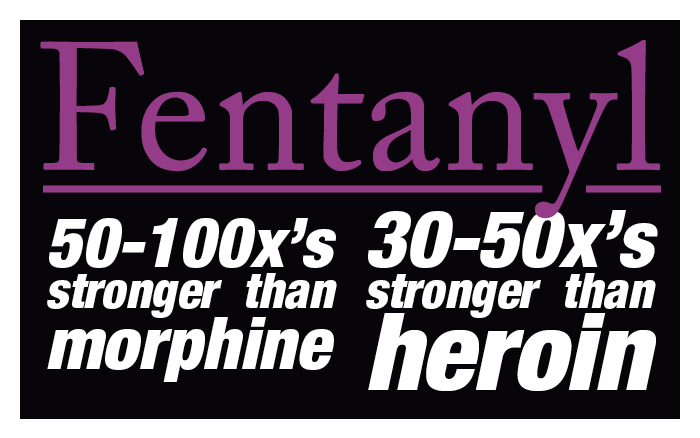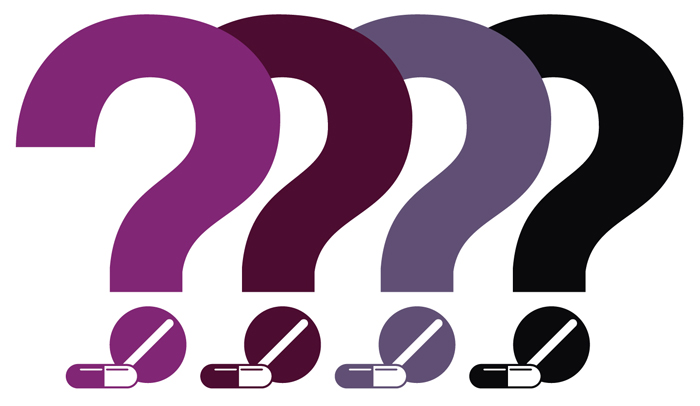Prince is Latest and Greatest to Succumb to Fentanyl’s Grip
 When Prince Rogers Nelson (better known as Prince) died suddenly on April 21 at the age of 57, his passing was met with a lot of grief, sadness, curiosity and skepticism. As was the case with musical legends Michael Jackson and Whitney Houston, a drug overdose was immediately suspected. A report by the Midwest Medical Examiner’s Office has put the mystery to bed – Prince died of an accidental overdose on fentanyl, a dangerously powerful opioid.
When Prince Rogers Nelson (better known as Prince) died suddenly on April 21 at the age of 57, his passing was met with a lot of grief, sadness, curiosity and skepticism. As was the case with musical legends Michael Jackson and Whitney Houston, a drug overdose was immediately suspected. A report by the Midwest Medical Examiner’s Office has put the mystery to bed – Prince died of an accidental overdose on fentanyl, a dangerously powerful opioid.
Prince was a musical icon and legend whose music touched millions of lives and will be listened to and enjoyed until the end of time. But, like many other musicians whose time seemingly came too soon, a lot of mystery surrounded his passing.
Prince was found unresponsive in an elevator at Paisley Park, his home and recording studio located in Chanhassen, MN. Paramedics were unable to revive the superstar with CPR, and law enforcement officials later said they found prescription opioid medication on Prince\’s body. [1]
How Did We Get Here?
Prince was apparently struggling with a Percocet addiction leading up to his death.
While the nature of his prescription pill use and abuse cannot be confirmed, it is clear that the people closest to him began to express concern over his usage in the weeks and months leading up to his death. According to the CNN article, an attorney for Prince’s half-siblings said that they revealed the musician had a Percocet addiction. One half sibling elaborated, saying that Prince began using the drug to deal with the rigors of his performance schedule, not for recreational purposes.
Just a week before he died, Prince’s private plane had to make an emergency landing following a concert in Atlanta, GA. The musician was unresponsive and taken to the hospital for a potential overdose on pain medication.
The day before his passing, Prince’s team of professionals contacted opioid addiction specialist, Dr. Howard Kornfield, seeking urgent help. Unable to attend, Dr. Kornfield immediately sent his son, Andrew Kornfield, on an overnight flight to assess the musician’s health and recommend treatment options for pain management and potential addiction. But Andrew Kornfield arrived too late the next day.
Neither the medical examiner’s office nor law enforcement officials were able to confirm that Prince had a prescription for fentanyl. The way in which the artist obtained fentanyl and from whom are currently under investigation. The full autopsy and toxicology reports will not be released to the public, according to several reports. [2]
Fentanyl Seizures and Deaths Continuing to Rise
 Prince’s name and face will certainly insert fentanyl in the public’s collective conscious, but this is a drug that has been wreaking havoc long before it took Prince’s life. The synthetic opioid was created in the 1950s as a safer and more effective pain treatment alternative to morphine and meperidine. Well, it definitely isn’t safer, but it is certainly far more effective.
Prince’s name and face will certainly insert fentanyl in the public’s collective conscious, but this is a drug that has been wreaking havoc long before it took Prince’s life. The synthetic opioid was created in the 1950s as a safer and more effective pain treatment alternative to morphine and meperidine. Well, it definitely isn’t safer, but it is certainly far more effective.
Fentanyl is the strongest approved opioid for medical use in the nation. The drug is said to be as much as 50-100 times stronger than morphine and 30-50 times more potent than heroin. The drug is most commonly prescribed for intense pain following surgery or the unimaginable pain experienced by patients with advanced cancer.
As little as a quarter of a milligram of fentanyl is enough to be fatal. To put that into context, a standard aspirin tablet is 325 milligrams. This means just a fractional dose can be deadly – something that law enforcement officials throughout North America have been learning the hard way. [3]
- According to the Drug Enforcement Administration (DEA), from 2013 – 2015, there were more than 700 Americans killed from fentanyl-related overdoses.[4]
- From 2005 – 2007, the DEA and Centers for Disease Control and Prevention (CDC) reported 1,103 fentanyl-related deaths from nonmedical usage. [5]
- In 2012, there were 618 reported seizures of fentanyl in forensic laboratories. By 2014, that number had jumped to 4,585. More than 80 percent of the seizures were concentrated in Ohio, Massachusetts, Pennsylvania, Maryland, New Jersey, Kentucky, Virginia, Florida, New Hampshire and Indiana. [6]
- From 2009 – 2014 in Canada, there were at least 655 deaths where fentanyl was determined to be a cause or contributing cause. Also during this time, there were at least 1,019 drug poisoning deaths where fentanyl was present. [7]
The DEA issued a nationwide warning about fentanyl in March of 2015, calling it a significant threat to public health and safety. The warning indicated that fentanyl was not only potentially fatal when ingested, but it can also be deadly with accidental skin contact.
Fentanyl Contaminating Street Drugs and Prescription Pills

The problem would be bad enough if people were knowingly taking fentanyl nonmedically, but it has become exacerbated by the fact that fentanyl is now being laced into heroin and prescription drugs. There is also a new wave of illegally made fentanyl analogs, designed to mimic the effects of the drug while circumventing national laws.
Several communities and officials across the nation have issued warnings of a new drug trend, where counterfeit pain and anxiety medications actually contain fentanyl. These pills were disguised as Percocet, Xanax and hydrocodone and have been related to several overdose deaths. These fake pills are cheaper than the real ones, and although they look identical, the unknown quantities of fentanyl and other drugs make them extremely dangerous.
The same can be said about fentanyl-laced heroin. All by itself, heroin is a highly dangerous and potentially fatal drug. When mixed with an unknown dosage of a drug that is far more powerful, the results can be horrifying. Drug users taking a “normal” dose of heroin would be in for something much more powerful, possibly leading to an overdose.
What makes it worse is that high amounts of naloxone (the opioid overdose reversal drug) are necessary to combat a fentanyl overdose. But physicians and emergency room staff who have no idea that the person has taken fentanyl will not be able to treat them effectively. Being that many heroin users are unaware of whether their drugs are laced or not, it would be nearly impossible for them to know if they had taken fentanyl.
Get Help for Opioid Addiction Before it’s Too Late
An overdose can happen anytime a person abuses heroin, fentanyl, Percocet or any other opioid.
Unfortunately in Prince’s case, those closest to him were not able to get him the help he needed in time. An overdose can happen anytime a person abuses heroin, fentanyl, Percocet or any other opioid. Had his friends, family members and associates noticed the problem earlier, they could’ve acted sooner and gotten Prince the potentially life-saving treatment he needed.
As we’ve learned from this tragic case, you may not get a second chance to save your addicted loved one’s life. If you or someone you care for is struggling with an opioid addiction of any kind, whether illicit or prescription, there’s no time to wait to take action. Contact our professionals today at 888-432-2467 to learn more about our addiction recovery treatment options and how we can potentially save your life or the life of someone you love.



